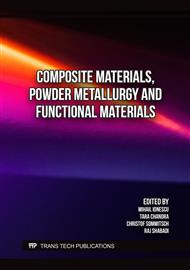p.49
p.55
p.61
p.67
p.73
p.79
p.87
p.93
p.105
Microstructure Evolution and Unique Deformation Behavior of a CrMnFeCoNi Harmonic Structure High Entropy Alloy at Elevated Temperatures
Abstract:
Harmonic Structure (HS) materials, a class of heterogeneously structured materials, are known to exhibit unique and superior mechanical properties. The HS consists of soft, coarse-grained regions (Core) that are three-dimensionally surrounded by an interconnected network of hard, ultrafine grained (UFG) regions (Shell). The unique UFG network structure of the Harmonic Structure increases the dislocation density of the core regions in contact with the Shell, resulting in increased strength and work hardening rate in the Core regions. These contribute to the high strength of the HS materials and suppress the plastic instability of the Shell regions, resulting in higher ductility of the HS materials. In the present research, the HS design is applied to a high-entropy CrMnFeCoNi alloy, also known as the Cantor alloy, to study the microstructure change during high temperature deformation at 1073 K and 1173 K. Although the alloy exhibits high strength and high ductility at cryogenic temperature due to the twinning deformation, the high temperature properties are not clear, especially in the case of the HS design. As a result, the alloy with or without HS design did not show twinning deformation at these temperatures, and it is noteworthy that the alloy with HS showed preferential recrystallization in the UFG network region, and thus the recrystallized UFGs played an important role in grain boundary sliding to demonstrate the pseudo-superplastic deformation behavior.
Info:
Periodical:
Pages:
73-78
Citation:
Online since:
December 2023
Price:
Сopyright:
© 2023 Trans Tech Publications Ltd. All Rights Reserved
Share:
Citation:



